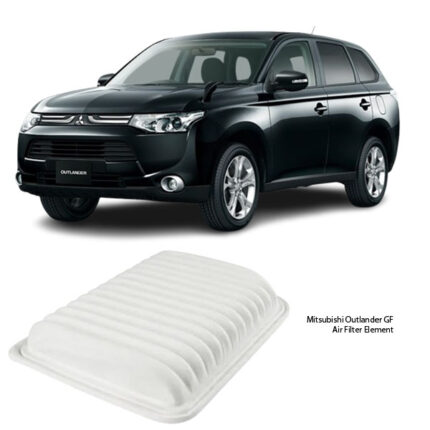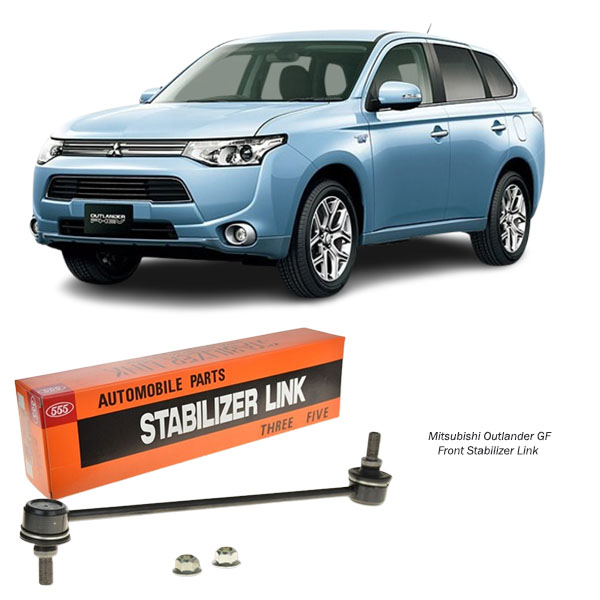-9%
Get Mitsubishi Outlander GF Front Stabilizer Link Assy SL-B010 in Kenya
The Front Stabilizer Link Assembly, also known as the Sway Bar Link, is a critical suspension component in modern vehicles. It connects the stabilizer bar (sway bar) to the control arms or struts, helping to minimize body roll and improve vehicle handling. Whether you’re driving on highways 🛣️, navigating rough terrains ⛰️, or making sharp turns, this small but mighty component ensures a smooth and stable ride.
What is a Stabilizer Bar and How Does It Work? 🔄🔗
The stabilizer bar (or sway bar) is a metal rod that runs across the front (and sometimes rear) of your vehicle. It plays a crucial role in reducing body roll during cornering. When you take a turn, the weight of the vehicle shifts to one side, causing the suspension to compress on that side.
The stabilizer link connects the sway bar to the suspension system, ensuring that both sides of the vehicle stay balanced. It works by transferring force from one side of the vehicle to the other, improving overall stability and control. 🏁🚦
Key Functions of the Front Stabilizer Link Assy 🔍🛠️
✔️ Reduces Body Roll – Prevents excessive tilting of the car during turns.
✔️ Enhances Steering Response – Provides better handling and responsiveness.
✔️ Improves Vehicle Stability – Keeps the car balanced, reducing the risk of rollovers.
✔️ Supports Suspension Performance – Works alongside struts and shocks for a smoother ride.
✔️ Increases Safety – Helps maintain proper contact between the tires and the road.
Symptoms of a Failing Front Stabilizer Link 🚨⚠️
Like any other suspension component, stabilizer links wear out over time. Here are some telltale signs that your front stabilizer link needs replacement:
1️⃣ Clunking or Rattling Noises 🔊
If you hear a clunking, knocking, or rattling sound from the front of the car, especially when driving over bumps or potholes, it could be a sign of worn-out stabilizer links.
2️⃣ Excessive Body Roll 🔄
If your car leans too much when cornering, the stabilizer link may not be functioning properly. This can make driving unsafe, especially at high speeds.
3️⃣ Loose or Unstable Steering 🏎️
If the steering feels loose or unresponsive, a damaged stabilizer link might be to blame. A properly functioning stabilizer link keeps the steering firm and precise.
4️⃣ Uneven Tire Wear 🛞
A failing stabilizer link can cause uneven tire wear, as it affects the alignment and balance of the suspension system.
5️⃣ Visual Wear and Tear 👀
Inspect the stabilizer links for cracks, rust, or loose ball joints. If they appear damaged, replacing them is the best option.
Causes of Front Stabilizer Link Failure 🤔🔎
Several factors can lead to premature wear and tear of stabilizer links:
❌ Rough Road Conditions – Potholes, speed bumps, and off-road driving can accelerate wear.
❌ Corrosion and Rust – Exposure to moisture, salt, and dirt can lead to rusting.
❌ Lack of Maintenance – Failing to check or replace suspension components when needed.
❌ Overloaded Vehicles – Carrying excessive weight puts extra stress on the stabilizer links.
❌ Worn-out Bushings – The rubber bushings deteriorate over time, leading to failure.
How to Replace a Front Stabilizer Link Assembly 🛠️🔧
Tools Needed:
✅ Jack and Jack Stands – To lift and support the vehicle.
✅ Wrenches & Sockets – To remove and install bolts.
✅ Pry Bar – To assist in removing stubborn components.
✅ New Stabilizer Link Assembly – Make sure it’s the right fit for your vehicle!
Step-by-Step Replacement Guide:
1️⃣ Lift the Vehicle 🚗🔼 – Use a jack to raise the car and secure it with jack stands.
2️⃣ Locate the Stabilizer Link 👀 – Find the link connecting the sway bar to the suspension.
3️⃣ Remove the Old Link 🔩 – Use a wrench to loosen and remove the bolts securing the old link.
4️⃣ Install the New Stabilizer Link 🆕 – Align it properly and tighten the bolts securely.
5️⃣ Double-Check Everything ✅ – Ensure the link is securely in place and the nuts are tightened.
6️⃣ Lower the Vehicle ⬇️ – Carefully remove the jack stands and lower the car.
7️⃣ Test Drive 🚗💨 – Take a short drive to check for noises or handling issues.
Pro Tip: Always replace both stabilizer links (left & right) at the same time for balanced performance! ⚖️
OEM vs. Aftermarket Stabilizer Links 🤝🏆
When replacing a stabilizer link, you have two options:
🔹 OEM (Original Equipment Manufacturer) Parts –
✅ Made by the same company that produced your car’s original parts.
✅ Higher quality and perfect fit.
✅ More expensive but last longer.
🔹 Aftermarket Parts –
✅ More affordable, with a wide range of options.
✅ Some high-quality brands offer equal or better performance.
✅ May vary in fit and durability.
💡 Tip: Choose high-quality aftermarket brands if going for a budget-friendly option!
How Often Should You Replace Stabilizer Links? ⏳🔄
Stabilizer links typically last 50,000 to 100,000 km (30,000 to 60,000 miles), but this varies based on driving conditions and vehicle usage. Regularly inspect them during routine maintenance to ensure they’re in good shape.
Conclusion: Why the Front Stabilizer Link Matters 🚗💨
The Front Stabilizer Link Assembly is a small but essential component of your car’s suspension system. By ensuring proper balance, stability, and handling, it plays a key role in driving safety.
✅ If you hear clunking noises, feel excessive body roll, or notice steering instability – it’s time to check and replace your stabilizer links!
✅ Regular inspections and maintenance can prevent bigger suspension issues.
✅ Choosing high-quality parts ensures durability and performance.
By keeping your stabilizer links in top shape, you’ll enjoy a safer, smoother, and more controlled driving experience!
Follow us on Facebook for more parts.



